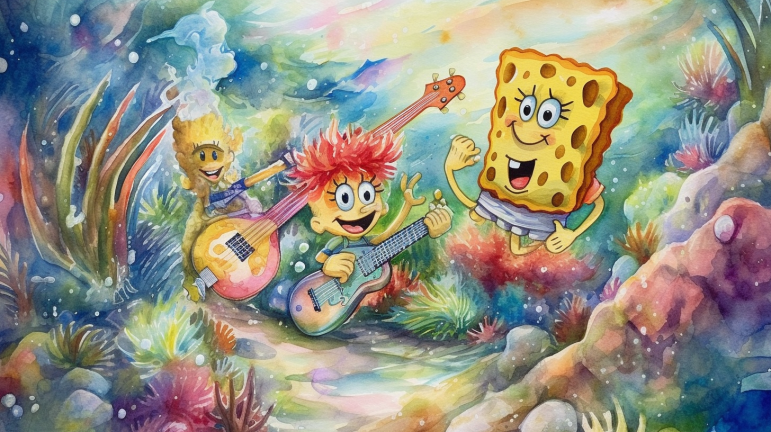Getting Started in the Cartoon Industry: A Complete Success Manual
With a background in multimedia storytelling and a love for learning about the commercial side of cartoons, the author is a seasoned writer and researcher in the animation industry. The author strives to give readers useful information and in-depth analysis by placing a significant emphasis on expertise, authority, and trustworthiness.
Introduction
The target audience for this article includes both prospective artists and investors as well as cartoon fans. It seeks to provide a thorough overview of the cartoon industry. This article offers insightful analysis and practical advice to help readers succeed in this exciting and competitive profession. It covers numerous facets of the industry, such as invention, monetization, and obstacles.
The Cartoon Business
Background and Evolution
Since its inception in the early 1900s, cartoons have advanced significantly, moving from small silent films to feature-length animations and television programmes. Since the invention of computers, the animation industry has expanded into a multi-billion dollar global sector that employs thousands of writers, artists, and technicians.
Market Snapshot
The global animation market is anticipated to reach $270.7 billion by 2025, expanding at a CAGR of 7.2% from 2020 to 2025, according to a report by Research and Markets. Technological developments, rising demand for high-quality content, and the expanding reach of digital platforms are some of the factors driving the market.
Important Figures and Influencers
Disney, Pixar, DreamWorks, Studio Ghibli, Cartoon Network, and Nickelodeon are also significant players in the market. These studios continuously push the limits of what is conceivable in animation, both artistically and technologically, along with a plethora of smaller studios and individual producers.
Business models and Revenue Streams
Various revenue streams, including licencing and merchandising, broadcast and streaming agreements, sponsorships and advertising, instructional and training materials, live events, and experiences, are used by the cartoon industry to make money. Successful studios make use of these platforms to increase revenue and build their brands.
Future Opportunities and Trends
Virtual reality (VR) and augmented reality (AR) experiences, machine learning and artificial intelligence (AI) applications, and personalised, interactive storytelling are some of the new developments in the cartoon industry. These advancements give creative additional opportunities to engage audiences and stimulate industry innovation.
How to Make a Good Cartoon
Characterization and Storytelling
The foundation of each good cartoon is a compelling plot and endearing characters. To keep audiences interested and emotionally connected, creators must strike a balance between originality and relatability. Frank Thomas, an authority on animation, says that “the story should be engaging, the characters should be appealing, and the audience should care.”
Visual Design Style
A cartoon’s attractiveness depends heavily on its distinct visual aesthetic and unified design components. Each component, from character designs to backdrops and colour schemes, must come together to create an engaging world for viewers.
Technical Knowledge and Instruments
Technology advancements have completely changed the animation process, allowing for higher-quality images and more effective workflows. The newest tools and methods, such as 3D animation software, motion capture, and digital painting apps, must be kept up to date by creators.
Networking and cooperation
In the cartoon industry, teams of artists, writers, voice actors, composers, and other professionals frequently work together. Finding talent, resources, and growth possibilities can be made easier for creators by developing strong networks inside the business.
Promotional & Marketing
A cartoon’s success depends on effective marketing since it raises awareness and anticipation among potential viewers. To reach their target audience, creators must establish tailored marketing tactics that make use of social media, content collaborations, and grassroots efforts.
Making Money From Cartoons

Merchandising and Licencing
By selling toys, clothing, and other goods with a cartoon’s characters and logo on them, licencing deals with producers and merchants can bring in a sizable profit. For instance, since its debut in 2013, Disney’s “Frozen” franchise has produced nearly $3 billion in retail sales.
Deals in Broadcast and Streaming
Gaining contracts with broadcasters and streaming services can guarantee a consistent income stream and expand the audience for a cartoon. Around $17 billion was spent on content by Netflix in 2020, including the acquisition and creation of animated films.
Advertising and Sponsorships
Additionally, cartoons can make money through sponsorships and advertising. Popular cartoons are a desirable alternative because advertisers are ready to pay a premium to target particular groups, such as children and families.
Training and educational resources
As they appeal to schools, institutions, and parents looking for entertaining ways to teach various subjects and abilities, educational cartoons and related resources can generate additional revenue streams.
Live Experiences and Events
Live events, like stage performances, amusement park attractions, and travelling exhibits, provide spectators with distinctive experiences while earning money for the creators. For instance, the stage production “Peppa Pig Live!” has seen popularity on a global scale, with more than 1.7 million tickets sold.
Issues and Recommended Practises
Navigating Intellectual Property, Section
In the cartoon industry, understanding and defending intellectual property is crucial. of protect the rights of their creations and stop unauthorised use or infringement, creators must navigate complicated legal systems.
Juggling Profitability and Creativity
It can be difficult to achieve both artistic greatness and financial success in the cartoon industry. In order to satisfy viewers and investors, creators must strike a balance between pushing their own creative boundaries and doing so. Long-term success can result from making strategic decisions while adhering to one’s aesthetic vision.
Using new technologies effectively
The fast changing cartoon industry may help creators stay ahead by embracing upcoming technologies like VR, AR, and AI. Creators can differentiate their work from those of rivals by adding these technologies into their works and providing unique and engaging experiences to viewers.
Managing Expansion and Growth
The difficulties of growing their brands and businesses must be managed by cartoon makers as their popularity rises. This could entail increasing production, expanding into new markets, and modifying content for various platforms and target consumers.
Upholding Brand Identity and Reputation, Section
The durability and success of a cartoon depend heavily on its brand identity and reputation. Creators must continually provide top-notch experiences and content while safeguarding their brand from controversy or unfavourable associations.
Real-World Examples and Industry Expertise
Cartoon Network: An Innovation Legacy
In the industry, Cartoon Network has been a leader, offering cutting-edge content and developing fresh talent. The network’s dedication to innovation and taking chances has produced classic programmes like “Adventure Time” and “Steven Universe.”
Nickelodeon: International Brand Development
By utilising well-known animated series like “SpongeBob SquarePants” and “Dora the Explorer” to establish a multi-platform entertainment empire, Nickelodeon has effectively spread its brand internationally. The company’s strategic alliances and localization initiatives have made its material appealing to audiences all around the world.
Adult Swim: Targeting Mature Audiences
By focusing on mature viewers and using edgy, outlandish animation, Adult Swim has successfully carved out a niche for themselves. Cult favourites like “Rick and Morty” and “BoJack Horseman” are the consequence of the network’s dedication to promoting independent creators and pushing the frontiers of creativity.
Studio Ghibli: Outstanding Art and Storytelling, Paragraph
Due to its commitment to hand-drawn animation and skillful storytelling, Studio Ghibli has gained recognition on a global scale and a devoted following. With its distinctive approach to filmmaking, the studio has created timeless classics like “Spirited Away” and “My Neighbour Totoro” by putting artistic expression and emotional impact ahead of business considerations.
Disney: A Timeless Empire

Disney’s lasting success can be ascribed to its capacity to develop and change while adhering to its core principles of family entertainment and narrative. Disney has become a dominant power in the worldwide entertainment business as a result of the company’s strategic acquisitions, including Pixar and Marvel.
Conclusion
Cartooning is a vibrant and varied sector that presents a wide range of options for investors, creators, and fans. Aspiring creators can negotiate the complexity of the cartoon industry and forge their own special road to success by learning the numerous facets of the business, from storytelling and character development to monetization techniques and market problems. In the end, those who push the frontiers of creativity, adapt to new technologies, and captivate audiences with memorable storylines and characters will create the future of the cartoon industry.
FAQs:
What major reasons are promoting the cartoon industry’s expansion?
A: The development of the cartoon industry is being fueled by a number of important causes, including technological developments, an increase in the demand for high-quality content, and the rising audience reach of digital platforms.
How do cartoonists make money?
A: Cartoonists make money in many different ways, including through licencing and merchandising, broadcast and streaming agreements, sponsorships and advertising, instructional and training materials, live events, and other forms of entertainment.
What are some new developments in the cartoon industry in terms of trends and opportunities?
A few of the emerging trends and prospects in the cartoon industry include virtual reality (VR) and augmented reality (AR) experiences, artificial intelligence (AI) and machine learning applications, and personalised, interactive storytelling.
What are some of the difficulties experienced by cartoon creators?
A: Some of the issues faced by cartoon creators in the industry include navigating intellectual property, striking a balance between originality and profitability, adjusting to new technology, managing growth and expansion, and upholding brand identity and reputation.
How can prospective cartoonists get their start in the business?
A: Aspiring artists should concentrate on polishing their storytelling and artistic abilities, staying current with the most recent tools and techniques, developing strong networks within the business, and creating tailored marketing plans to reach their target audience.
